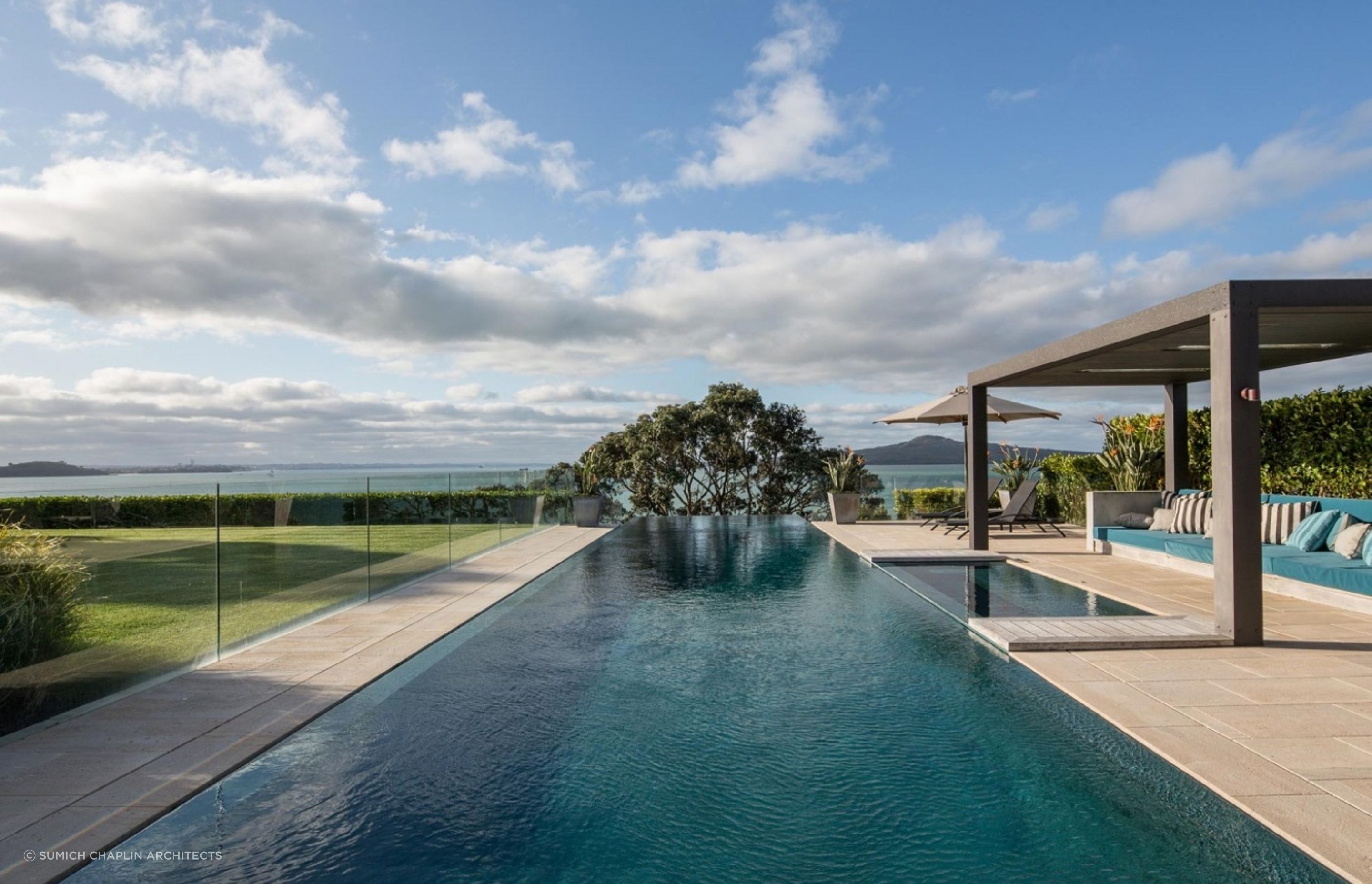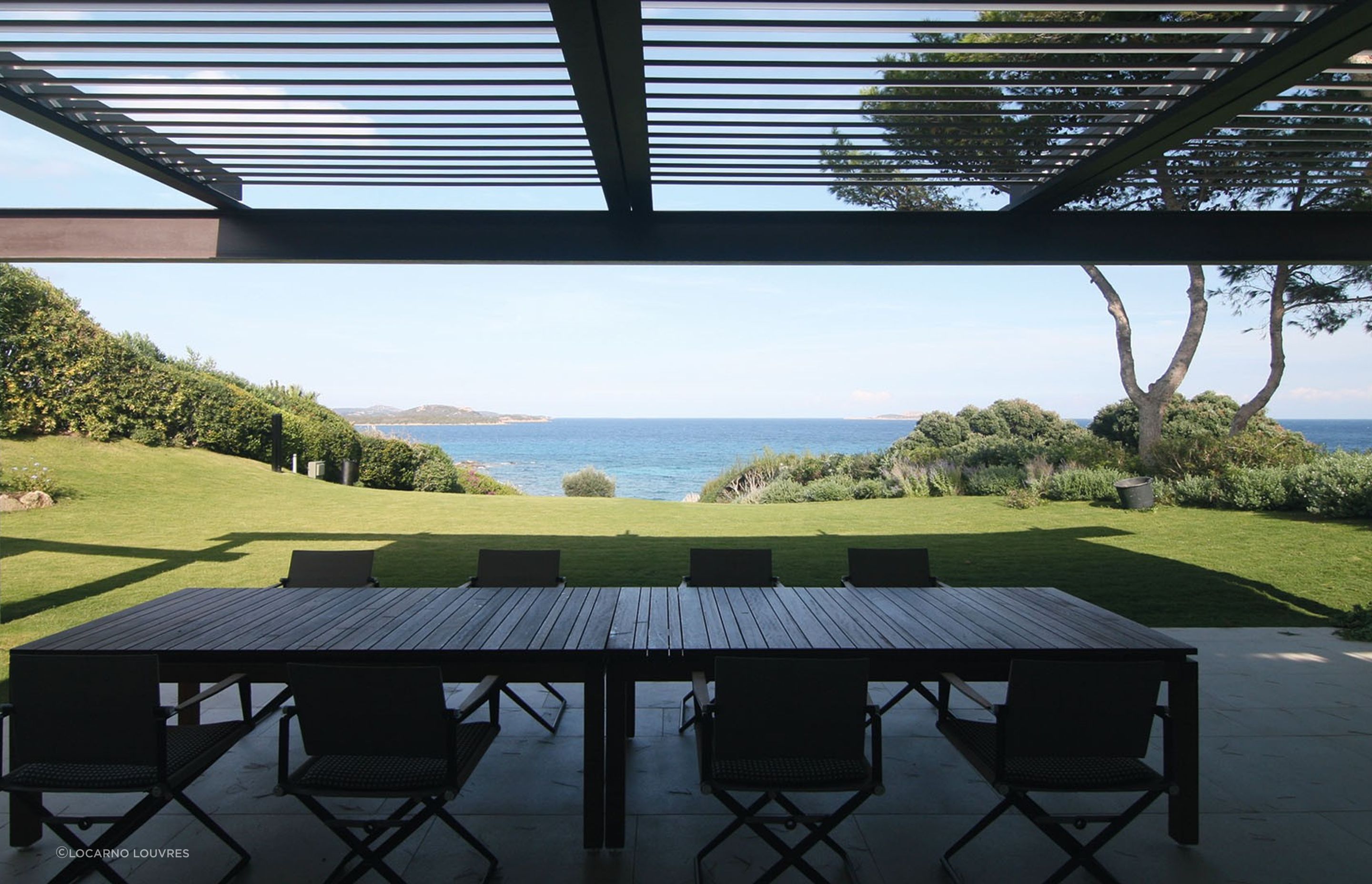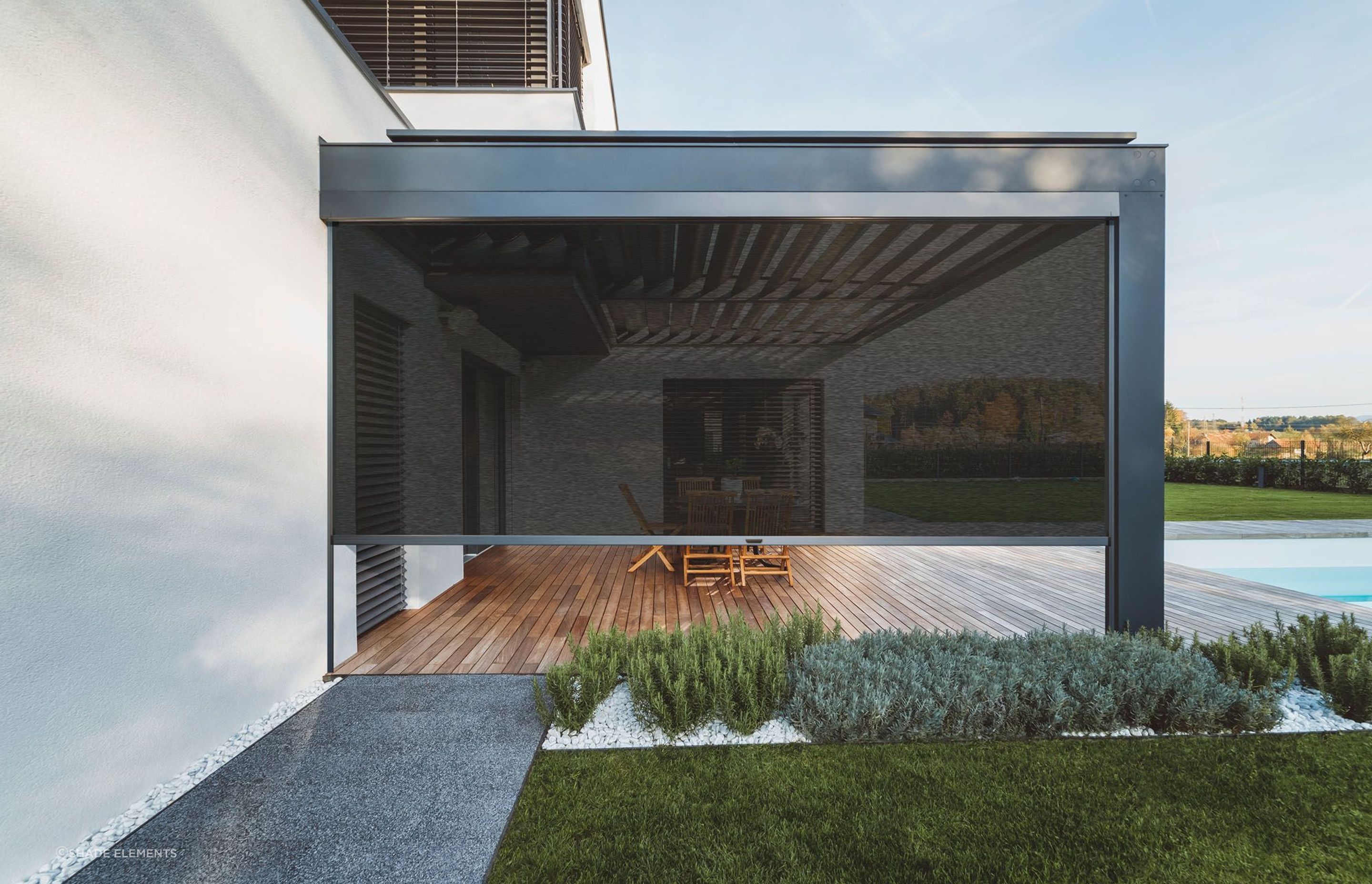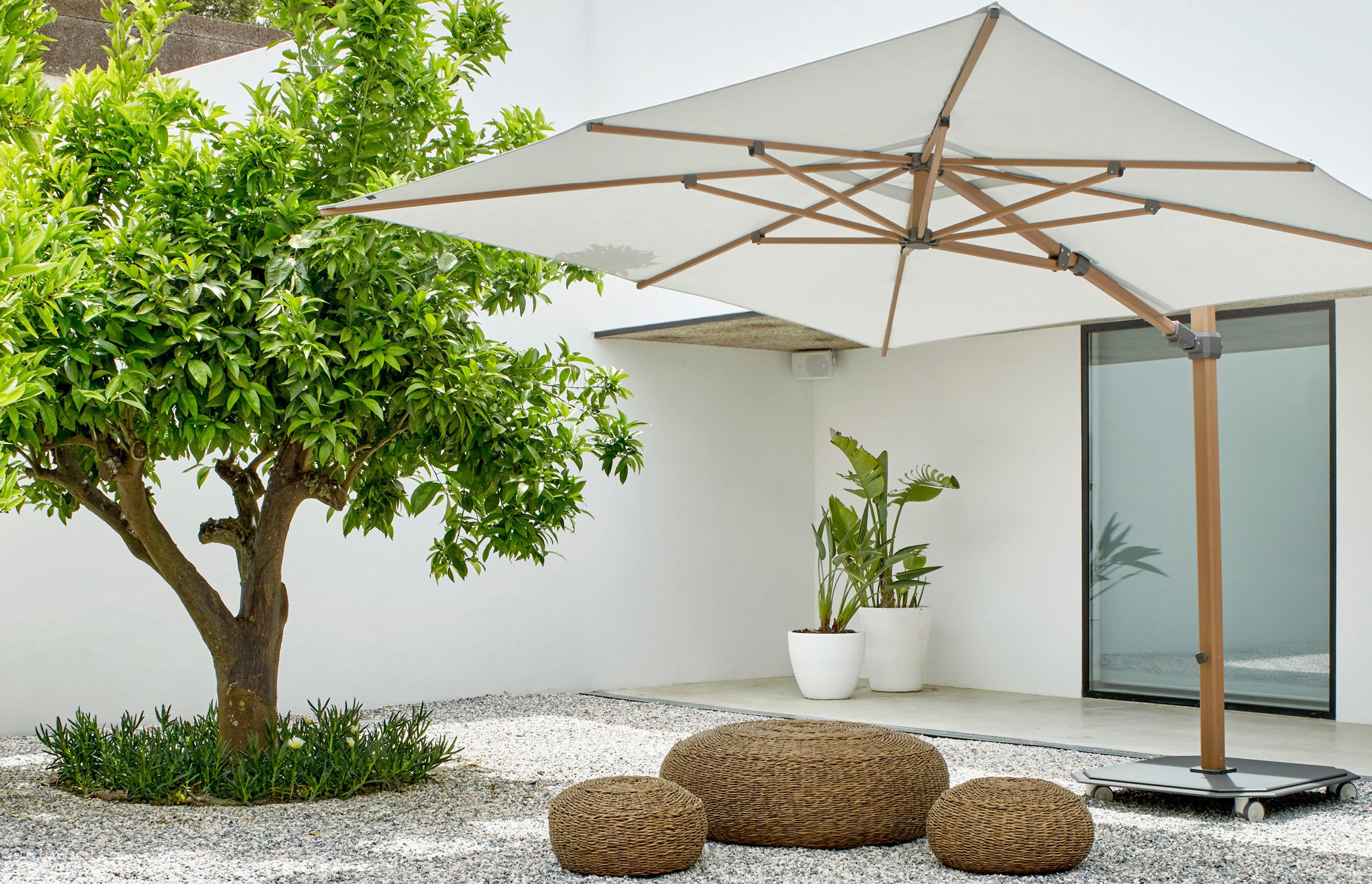Picking the perfect outdoor shade solution for your home
Written by
01 December 2020
•
9 min read

An outdoor living space isn't complete without a high-quality outdoor shelter and shade system. They allow us to enjoy our decks, patios and backyard spaces in all sorts of weather, important in a country where it is as highly changeable as it is in New Zealand. To help you choose the right outdoor shade solution for your home, we've done a thorough breakdown of all the main options so you can make the best choice for you.
1. Retractable awnings
Retractable awnings offer convenient protection that can shade you from the intense sunlight during the day and let you enjoy a starry night later. It's an excellent solution for balconies since this kind of awning allows you to let more light inside. Retractable awnings also feature no posts or poles and can cover a sizable area while leaving all usable space unobstructed.
They can have higher upfront costs compared to some other outdoor shade solutions, especially if motorised, and often require professional installation. However, they are extremely convenient and easy to use and have the added benefit of being hidden when not in use.
Retractable awnings are primarily intended as protection from the sun. They can withstand some wind and rain but they do have their limits.
Can retractable awnings withstand wind?
Yes, they can withstand winds to a certain limit but it is always good to check a product for the wind ratings and manufacturer advice on this. In general, it's advised to keep patio awnings retracted if the wind blows 30 kmph or more. Some products have wind sensors that will retract an awning automatically if the wind gets too severe which is a good feature to have in particularly gusty areas.
Installation and maintenance requirements
Installation should be done professionally, although some manufacturers offer DIY instructions too. Estimating correct ground clearance is vital since you need to know the exact size of the area that needs coverage. Also, a proper, sturdy installation of mounting brackets will minimise wind impact and the possibility of future damage. Then comes the hood, before attaching the assembled awning to the wall.
Regular maintenance entails a thorough annual cleaning with a soft brush, and mild soap in lukewarm water. Additionally, it's recommended to rinse your awning down once a month, using a garden hose and clean the underside with a household broom.
A good idea is to keep shrubbery trimmed away, as many varieties contain acid that can damage the fabric. Finally, make sure to regularly check awning frames for rust, as it can cause deterioration of the structure and also lead to fabric stains.
Related article: The pros and cons of retractable awnings
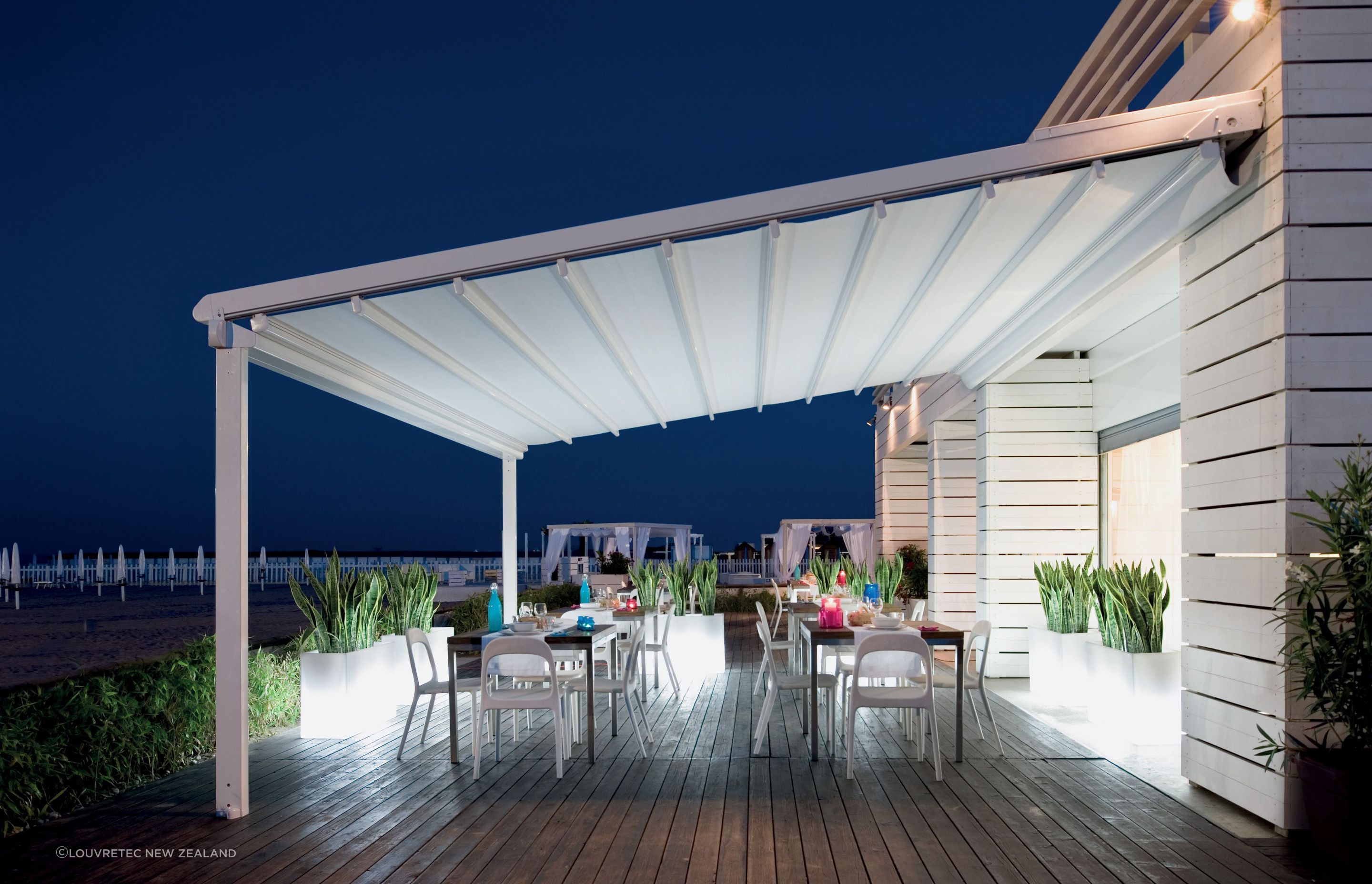
2. Gazebos
Gazebos are a popular shade system for outdoor areas, offering both practical and stylistic benefits. They allow you to create a comfortable outdoor living space for relaxation, dining, and entertainment, enhancing a deck or garden's appeal and potentially increasing property value. They can be used in many different ways, from spa enclosures to outdoor kitchens, offering shade, shelter, and privacy. Materials and styles vary, allowing homeowners to choose gazebos that complement their home and landscape, with options for customization to suit specific needs and tastes.
The cost of installing a gazebo varies, with pre-fabricated kits ranging from $1,000 to over $10,000, and custom-built structures starting at around $5,000, potentially exceeding $20,000 for elaborate designs and materials. Factors influencing price include size, materials, design complexity, brand and additional features such as electrical wiring.
Installation and maintenance requirements
A portable gazebo can be installed anywhere, as it only needs to be staked securely in place. A permanent gazebo requires a foundation in the form of a concrete slab or concrete piers. Its structure consists of posts, beams, and a roof with rafters. A square top is the most straightforward option, while the traditional hexagonal or even octagonal roof requires more effort. Some gazebo kits also feature two-tiered roof, cupola, and railing panels.
Maintenance of the gazebo depends on the structure type. Plastic and composite materials require only periodic sweeping and annual cleaning, using warm water and mild soap. Wooden structures will need painting, staining, and specific treatments with a clear waterproof seal.
3. Opening louvre roofs
Louvre roofs are adjustable roofing systems that allow homeowners to control sunlight and ventilation, providing a versatile solution for weather protection while maintaining the outdoor feel. With the ability to tilt, retract, or fully close the louvres, they offer an ideal balance between shade on hot days and shelter during inclement weather, making outdoor areas usable year-round. The integration of louvre roofs into outdoor spaces not only extends the living area but also adds to the aesthetic appeal and functionality of gardens, patios, or decks.
The cost of installing a louvre roof in New Zealand varies widely based on factors such as size, material quality, and automation features. Basic manual systems might start from $700 to $1,000 per square metre, while automated systems with sensors for rain, wind, and sunlight can significantly increase the price, sometimes exceeding $1,200 per square metre. These costs generally include installation but can vary depending on additional customisations like integrated lighting, heating, or side screens for added privacy and weather protection. Despite the initial investment, the benefits of enhanced outdoor usability, increased home value, and improved lifestyle often outweigh the costs, making louvre roofs a desirable feature for many.
Installation and maintenance requirements
Before installation, you need to take into consideration the area, as well as additional facilities like supports and frames. Based on your outdoor space orientation, you will decide how the blades will be opening. Manual opening roofs have louvre blades operated by a lever. Automatic opening roofs can be altered with the touch of a button, by remote control or even using an app.
A thorough semi-annual cleaning of the louvre blades is highly recommended. If you live in a coastal area, make it three months. Dry brushing followed by warm water and mild soap will suffice.
4. Outdoor blinds
Outdoor blinds are a pragmatic and sophisticated solution for enhancing outdoor living spaces. They offer several benefits, making them a popular choice for homeowners looking to maximise the comfort and usability of areas such as patios, decks, and verandas. They are quite a natural type of shade system adding an interior styling element to an outdoor setting with many types of materials and designs to choose from. They also are very effective at improving privacy, often giving homeowners full privacy from neighbours and those passing by.
The cost of outdoor blinds varies and many of the same factors as types of outdoor shades i.e. size, material, manual or motorised operation etc. Basic manual outdoor blinds can start from approximately $70 to $300 per metre, while high-end, motorised systems with features like sun and wind sensors can cost upwards of $500 to $1,000 per metre. Installation costs can also vary, so it's important to consider the full scope of the project when budgeting.
Installation and maintenance requirements
Maintenance comprises regular dusting, and occasional cleaning with a soft cloth, cold water, and mild detergent. Avoid harsh chemicals and high-pressure cleaners as those can damage the fabric.
Related article: Shedding light on outdoor blinds — costs, installation and more
5. Outdoor umbrellas
Outdoor umbrellas are a popular and cost-effective solution for enhancing outdoor living spaces. They offer flexible shade options, making them an ideal choice for homeowners looking to protect their outdoor areas from variable weather. They can be easily adjusted or moved to provide optimal shade for different situations at different times of day. Beyond this, outdoor umbrellas can look incredibly stylish too with many different designs, patterns, materials and colours available. Some like to use them as an injection of colour while others opt for a more complementary look.
The cost of outdoor umbrellas in New Zealand can vary significantly based on size, material quality, brand, and features such as UV protection, wind resistance, and ease of operation (e.g., manual vs. automated opening mechanisms). Basic models can start from as low as $100 to $200, offering a straightforward solution for those on a budget. Mid-range options, which may offer better durability and additional features like tilt and crank mechanisms, can range from $300 to $600. For high-end or commercial-grade umbrellas, designed with superior materials and features like wind vents, rotatable bases, and integrated lighting, prices can escalate to $1,000 or more.
Installation and maintenance requirements
Most patio umbrellas measure between 1.5m and 4m in diameter. A pole can be placed into a hole in your outdoor dining table or kept stable by a weighted base. A crank at the top of the shaft allows you to raise or lower the canopy as desired.
Monthly maintenance is recommended, in the form of washing with a mild soap solution and allowing it to dry naturally.
6. Shade sails
Shade sails are an innovative and dynamic shade solution with plenty of wow factor. These versatile fabric structures are designed to provide ample shade, reducing exposure to harmful UV rays and creating cooler, more comfortable outdoor areas for activities like dining, lounging, or playing. Their unique advantage lies in their ability to be customised to fit various spaces and designs, allowing for creative and effective shading that enhances the visual appeal of gardens, patios, and pool areas. Furthermore, shade sails offer flexibility and airflow that is often preferable to more solid structures, maintaining an open, airy environment while still providing protection from the sun.
The cost of shade sails varies widely based on several factors, including the size, fabric quality, and complexity of the installation. Basic, off-the-shelf shade sails can start from around $100 to $500, offering a cost-effective solution for those on a tight budget. However, for custom-designed and professionally installed sails using high-quality, durable fabrics and robust fixing systems, prices can range from $1,000 to over $5,000. These costs typically reflect the sail's materials, design intricacies, and the need for secure installation to withstand variable weather conditions, including strong winds and heavy rain.
Installation and maintenance requirements
Outdoor shade sails feature a flexible membrane, usually made out of a variety of water-resistant or waterproof fabrics, tightened between several anchor points. They can be tightened to a wall, stretched between two columns, or left freestanding in areas without strong winds.
Maintenance is easy with a spray cleaning solution. Brush, rinse, and leave to dry naturally.
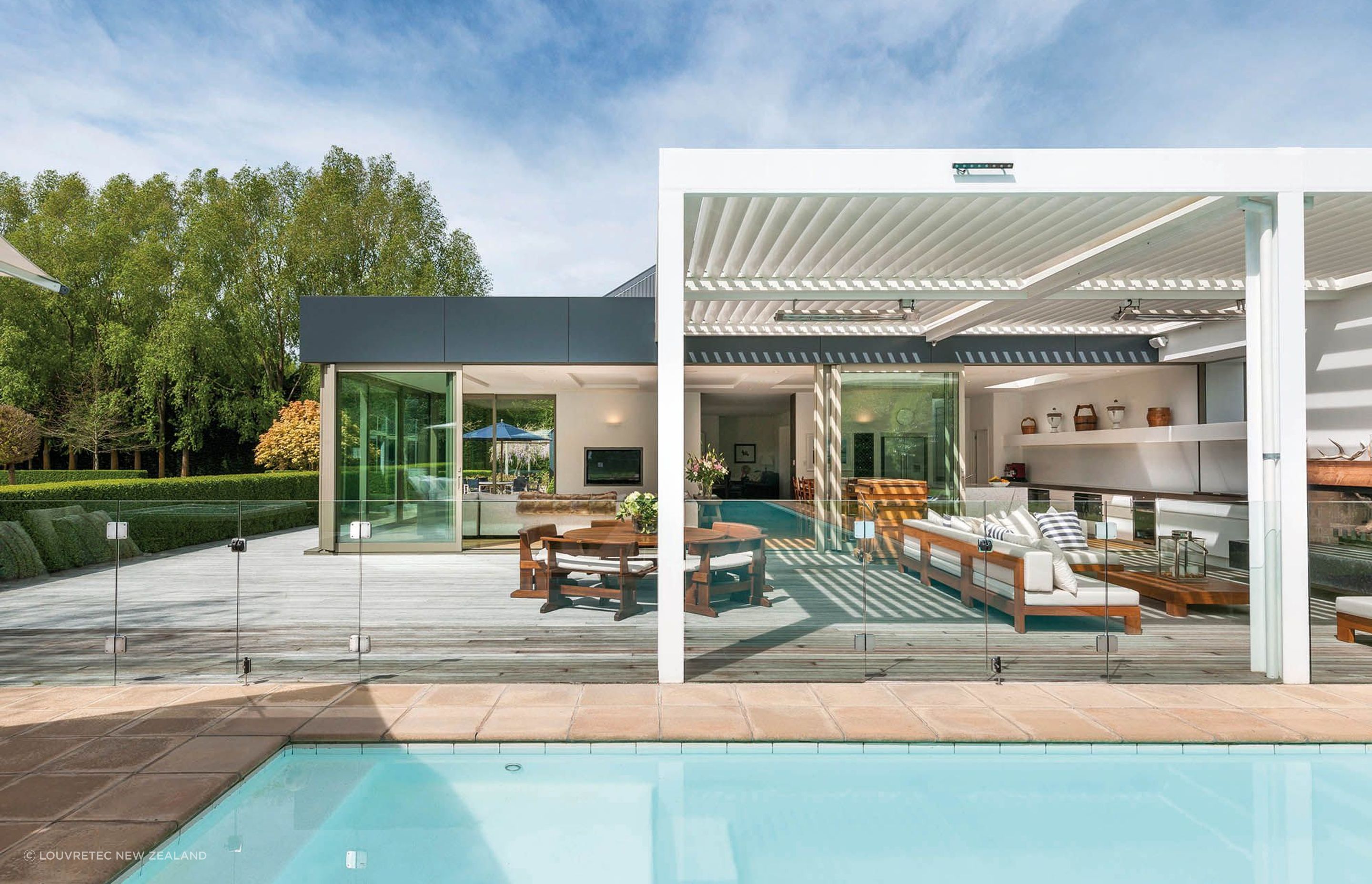
Choosing the right outdoor shade solution for your home
As you can see, there are some great outdoor shade systems to consider to help you create your own outdoor oasis. Now you have an in-depth understanding of the main types of solutions, you can make an informed choice by thinking about your budget, local weather conditions, and preferences. In doing so, you'll end up with a product that provides shade and shelter for your outdoor area in a stylish way at a price you're comfortable with.
This article was updated on the 16th February 2024
